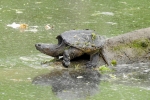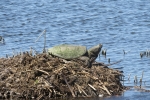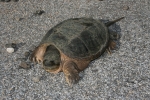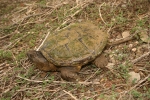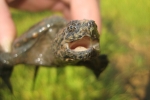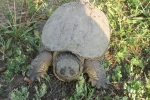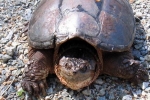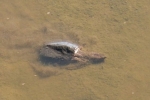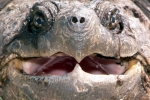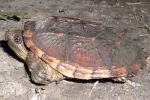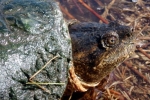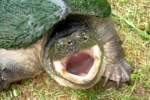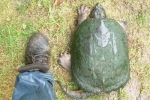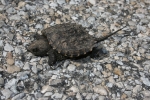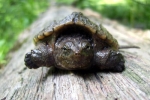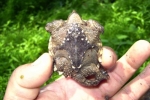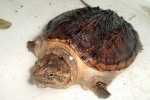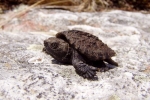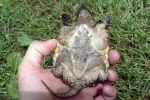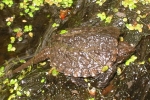Snapping Turtle
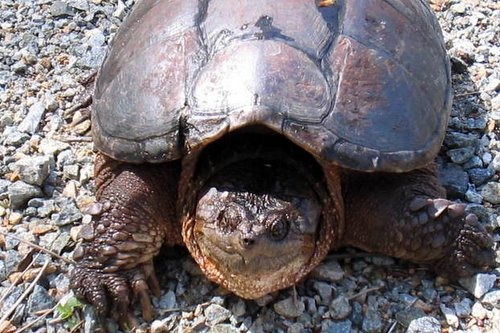
Scientific Name: Chelydra serpentina
Size: 8-18.5 inches (20-47 cm) in length
Status: Abundant
Habitat:
Almost any fresh water habitat – Pools, ponds, streams, rivers, lakes, marshes, and swamps.
Description:
Large aquatic species. Snapping turtles typically have a dark upper shell. These can range from a brown to black. Occasionally they may appear to have an olive coloration. The underside of a snapping turtle is typically off-white or gray. Some individuals may have a yellowish appearance. The skin of the snapping turtle is also usually dark. It will often range from gray, brown or black. The true color of these turtles is often concealed below a layer of mud or vegetation which accumulates on it's shell. The shell is often jagged on the edges and has ridges along the top. Snapping turtles have large, obvious tails. Has a reduced plastron.
- The carapace color is light brown, olive-brown to black.
- The carapacial scales often have dark radiating lines that run from the center to the edge.
- The plastron is off-white to yellowish grey.
- The skin of the head, neck, legs, and tail are brown, brownish-grey to brown-black above, and ventrally may be white.
- The head is un-patterned, but the jaws may have streaks of dark lines
- Large aquatic species.
- The carapace is somewhat oblong and very heavy.
- The costal and vertebral scutes have raised keels that are more noticeable in hatchlings and juveniles. Older individuals may have a smooth carapace.
- The posterior margin of the carapace is strongly serrated.
- The plastron is small and cruciform and connected to the plastron by a pair of long, narrow bridges.
- The head is large, and the neck is long and thin.
- The top portion of the head is covered with tuberosities.
- The jaws are heavy and the lower jaw has a hooked tip.
- The chin has barbels.
- The legs are large and thick.
- The feet have thick claws.
- The tail is long and thick at the base and tapers to a point.
- Similar to adults


References:
- Hulse, C. and McCoy C. J. and Ellen Censky ,1998. Amphibians and Reptiles of Pennsylvania and the Northeast. 188-193pp.
- Ernst, Carl H. and Lovich, Jeffrey E., and Barbour, Roger W. ,1994. Turtles of the United States and Canada. 2-18pp.
- John Smith
- Billy Brown
- Bob Hamilton
- Jeff Hankey
- Wayne Fidler
- Dave Emma
- Don Becker (psychoticnature.com)
- Stephen Staedtler
Heads up!
Please contribute your observation of this and other herps to the Pennsylvania Amphibian and Reptile Survey. Your help is needed.
